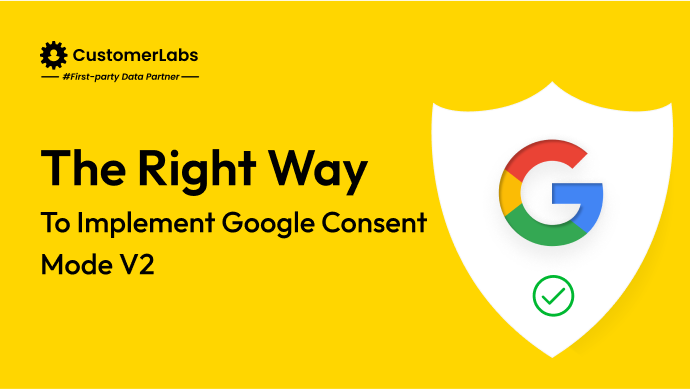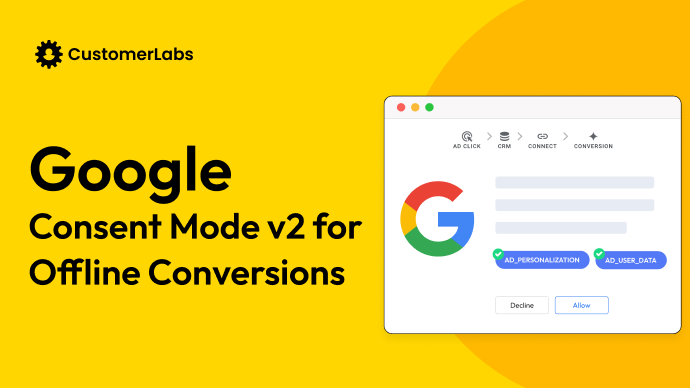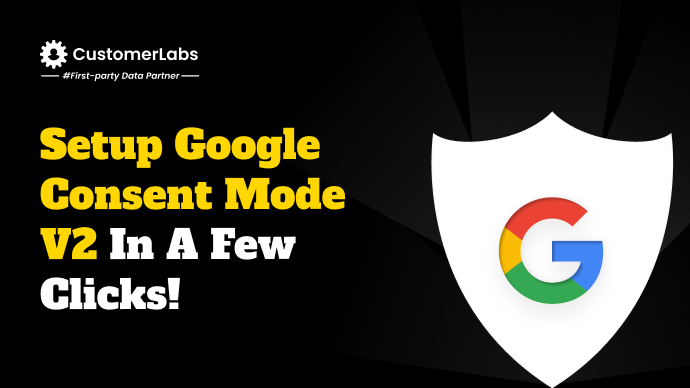Are you still under the perception that CMPs will be a one-stop solution for all consent regarding concerns? 🫣
Don’t get confused with CookieBot/CookieYes etc. They are more of a front-end cookie banner that collects consent through cookies on your website. To run campaigns, the marketer must use the consented data aligned with privacy laws.
Marketers need a lot of control over what data is collected especially when they decide to activate the data in Ad platforms. To activate the data, it’s mandatory to use consent parameters to activate data accordingly.
The Platform-Specific Consent Parameters
Major Platforms like Google and Facebook are introducing features like Consent Mode and Limited Data Use, giving users more control over their data.
These features operate independently, requiring marketers to manage consent parameters for each platform individually. Soon, each platform will come up with its consent settings.
Marketers configuring and maintaining consent on multiple platforms will lead to ambiguity. They’ll have to heavily depend on Developers. We got you! 😎
In CustomerLabs, we believe that depending on the platform requirements, marketers should be able to collect and share consent without the need for developers.
CustomerLabs: A Unified Approach to Setup Consent
CustomerLabs streamlines consent management across all integrated platforms. To set up consent parameters, you need to update the consent parameters.
Update Consent Parameters
It’s important to update and transfer your users’ consent preferences while sending data to the destination via the server side to CustomerLabs.
Following either way to update the consent parameters of users with CustomerLabs,
- If you’re using a Google Certified CMP, the details are pushed to the DataLayer. In this case, you can send these consent parameters via Google Tag Manager. Refer to the documentation here.
- Alternatively, invoke the function _cl.trackConsent() with the required consent parameters as shown below.
Function Params
/**
*
*
* This function is available for end users to send consent params to update the consent
* @function trackConsent
* @param {object} params consent params
*/
"ad_user_data": "granted/denied" //granted or denied consent based on specific needs
Function example
_cl.trackConsent({
"ad_user_data": "granted",
"ad_personalization": "granted",
"ad_storage": "denied"
});
list //params that can be added for consent
{
"ad_user_data": "granted",
"analytics_storage": "granted",
"ad_personalization": "granted",
"ad_storage": "granted",
"functionality_storage": "granted",
"personalization_storage": "granted",
"security_storage": "granted"
}
CustomerLabs’ Approach enables you to customise and send consent parameters to any integrated platform. This ensures that platform-specific requirements are met and eliminates the need to navigate to individual platforms.
Look at the snapshot below detailing the different consent parameters sent across multiple platforms.
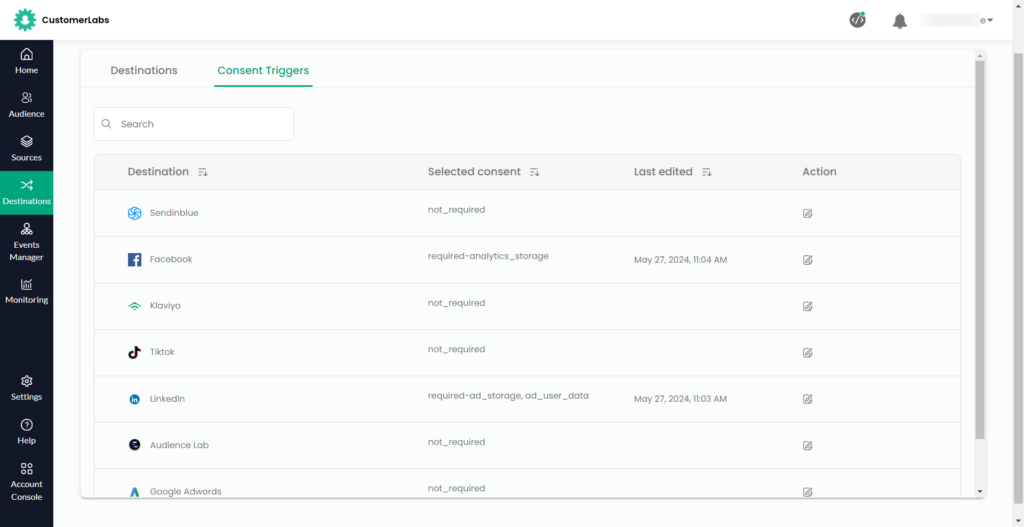
It enables you to stay compliant by managing consent parameters, even for platforms yet to develop their consent policies.
We’ve got consent covered for websites, but what about offline data?
With CustomerLabs, you’ll have complete control over your customer data. It gathers data from all sources, manages it, and allows you to send consented data to various integrated platforms.
CustomerLabs: An end-to-end solution
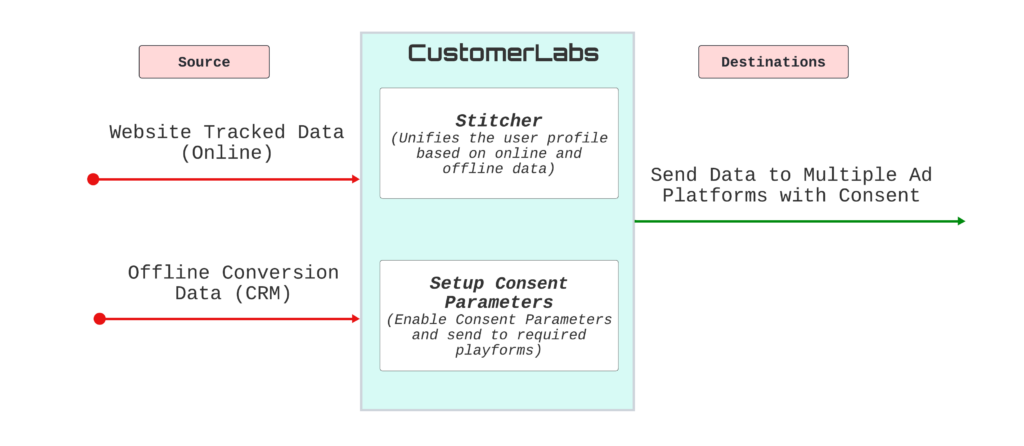
Let’s consider a user clicks an ad and visits your website, interacts with your consent banner, submits a form and leaves the website. Later, they convert offline. You store this in your CRM without the consent parameters.
With CustomerLabs tracking your website, the user details including the consent parameters and external IDs will be available. By integrating your offline conversion data from your CRM, CustomerLabs stitches the user details and unifies the profile using Stitcher 2.0 as shown below.
✅ Website is tracked and CRM as a source is connected.
Send consent via Events
Further with CustomerLabs, you send consented events to any integrated platforms,
The below snapshot is a consented event sent to Google Ads.
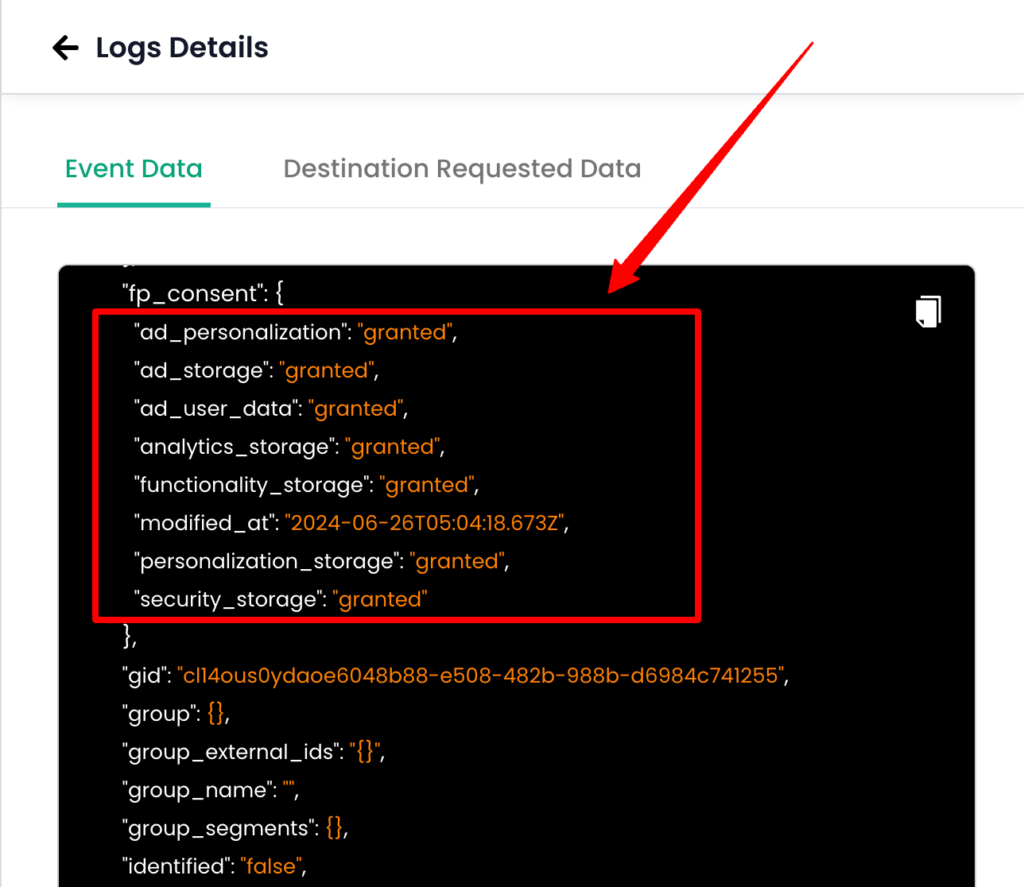
Send consent via Audiences
The sources helps with unification of user profiles. Hnece, consented audiences can be created and synced.
Given below is a user profile snapshot that highlights user details, External IDs and user consent parameters.
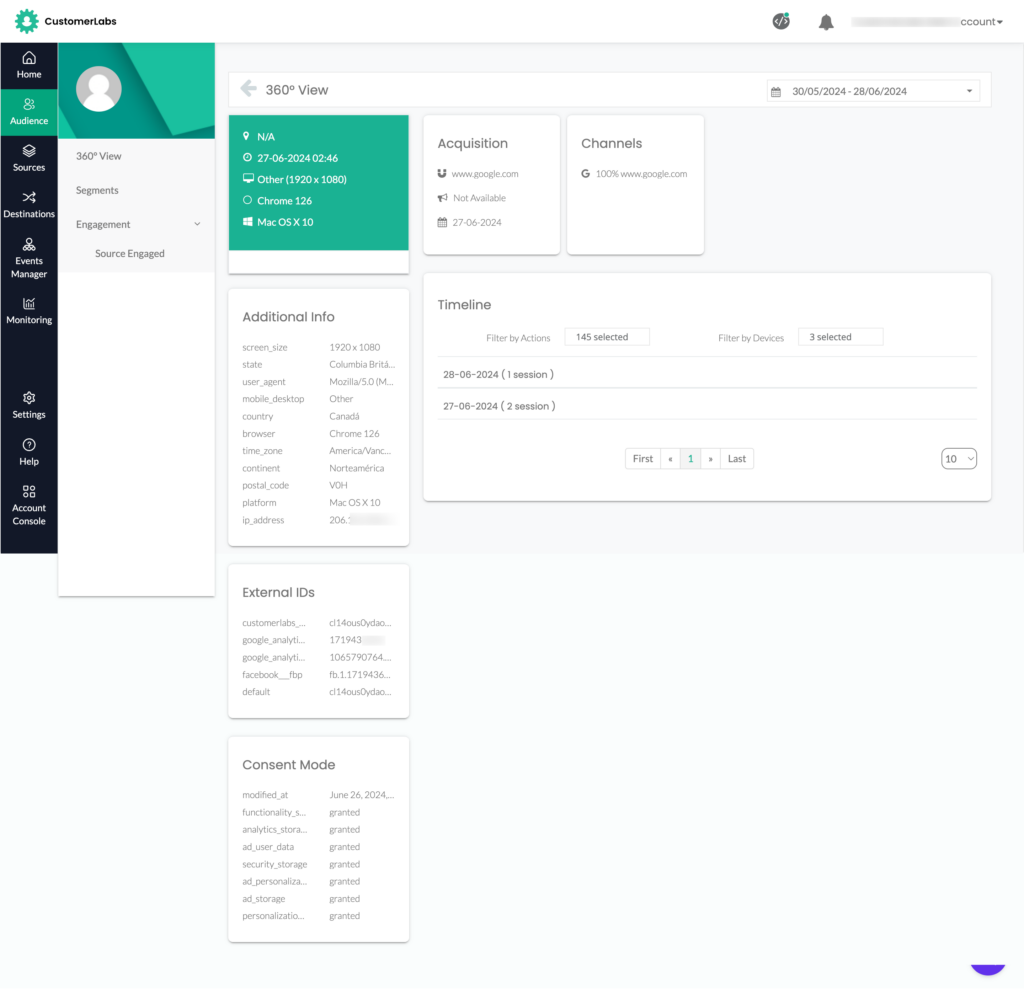
✅ Consented Audiences and Events can be sent to integrated platforms.
Set up data flow and consent for Google, Facebook, and other integrated platforms in just a few clicks.
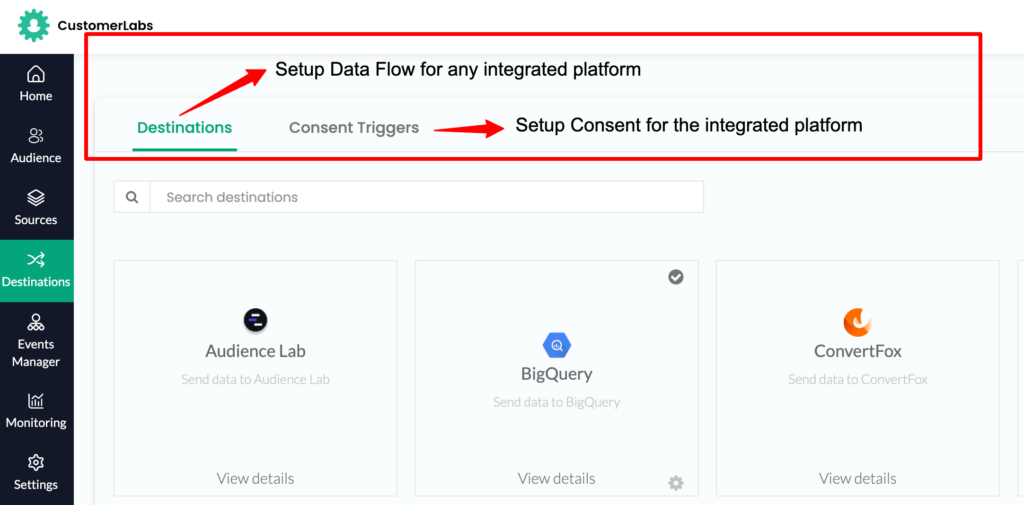
Data privacy regulations are not going away. CustomerLabs enables you to streamline consent management and send all required destinations in just a few clicks.

